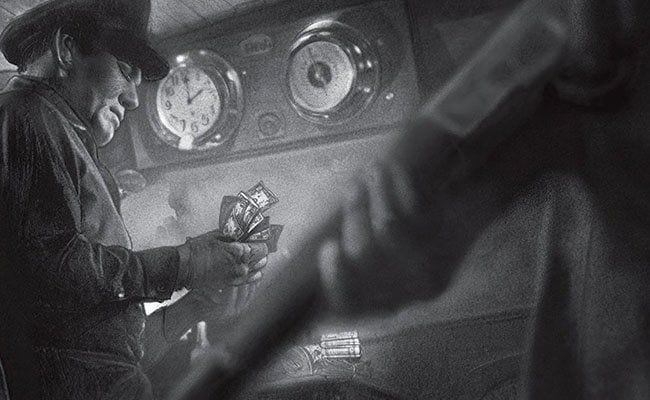
Given that many people know American novels, to the extent that they know them, from the film versions (if any) more than from reading them, most people know Ernest Hemingway’s 1937 novel To Have and Have Not from Howard Hawks’ 1944 film, which introduced Lauren Bacall to a dazzled world and an equally bewitched Humphrey Bogart. At 19, she slinked across the screen, all hair and elbows, and delivered come-hither lines like “You know how to whistle, don’t you, Steve? You just put your lips together and blow.”
Less well known, unfortunately, is the 1950 remake, which happens to be a much more faithful adaption and therefore more pleasing to Hemingway and his readers. It’s ironic, then, that it uses a different title, The Breaking Point, probably in an effort to avoid unfair comparisons to the previous hit. Criterion has now issued that remake on Blu-ray for the delectation of fans of Hemingway, of excellent noir films, and of intense star John Garfield who, as always, is basically playing John Garfield.
While sticking more closely to Hemingway’s story, Ranald McDougall’s script updates it to a postwar 1950 context. Garfield’s Harry Morgan is a Florida fishing boat captain failing to make ends meet while trying to support a wife (Phyllis Thaxter) and two girls, and the economic pressure drives him to flirting with shady activities.
A blonde, brazen Patricia Neal plays a femme who’s not really that fatale. She walks into Harry’s life with a big job that might pay a few bills and prevent Morgan from feeling desperate and emasculated. Whether we’ve seen or read the story before, we sense things won’t go well, and we ache for these sympathetic, floundering people presented to us gravely and without cynicism, even when cynical themselves.
One of Hollywood’s great under-used actors, Juano Hernandez, plays Morgan’s partner and friend. His character occasions what Leonard Maltin correctly calls the haunting final image, by which point he’s stolen the film’s emotional core from Garfield and Neal.
It’s always a special pleasure to see Hernandez. His policy of refusing roles that he considered demeaning or stereotypical to African-Americans meant that he didn’t work as often as he should have. On the other hand, when he does show up in the credits, you know it’s an above average role. His most astonishing appearance is in the previous year’s Intruder in the Dust, Clarence Brown’s adaptation of a William Faulkner novel that was one of the rare movies that pleased Faulkner.
The year 1950 was a banner one for Hernandez. Aside from The Breaking Point, director Michael Curtiz and producer Jerry Wald also used him in the excellent Young Man with a Horn and he also made Jacques Tourneur’s Stars in My Crown, one of my favorite Americana movies. He’d appear in another Hemingway film, Martin Ritt’s Adventures of a Young Man, being among the brighter points in that minor effort. That was another Wald production; he was an ambitious and socially conscious producer responsible for adapting many books to the screen with varying degrees of success.
The great Curtiz directs with surprising flexibility even for him, on some real locations (in California, not Florida), though of course, this Casablanca director manages to get in some shady bar scenes with the shadows of fans turning over the characters. Curtiz would be lost without his shadows. His black and white photographer is the equally protean Ted McCord, whose work ranges from John Huston’s The Treasure of the Sierra Madre (1948) to the color and Cinemascope of Elia Kazan’s East of Eden (1955) and Robert Wise’s The Sound of Music (1965).
This excellent film has previously been available on disc as an on-demand DVD-R from Warner Archive. Feel free to favor this 2K digitial restoration, which includes an interview with Garfield’s daughter, appreciative critical essays on Curtiz, and a 1962 piece from the Today show on Hemingway’s house in Key West.

